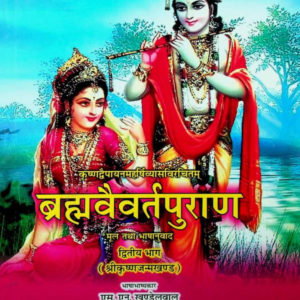Puran
The Puranas are a genre of ancient Indian literature that serve as a vast repository of mythological narratives, religious rituals, cosmological theories, genealogies, and cultural traditions. Written primarily in Sanskrit, these texts are among the most significant sources for understanding the religious and cultural history of Hinduism. The word “Purana” means “ancient” or “old,” reflecting their role in preserving ancient knowledge and traditions.
Overview and Significance
Purpose and Content:
- The Puranas were composed to make the complex teachings of the Vedas accessible to the general population. They cover a wide range of topics, including the creation of the universe, the genealogies of gods and sages, stories of heroes and demigods, and guidelines for religious practices and moral conduct.
Structure:
- Each Purana typically consists of five key elements (Pancha-Lakshana): Sarga (creation), Pratisarga (recreation), Vamsa (genealogy of gods and sages), Manvantara (cosmic cycles), and Vamsanucharita (histories of royal dynasties).
Classification
The Puranas are traditionally classified into three broad categories based on their primary focus and the deity they glorify:
- Mahapuranas:
- There are 18 Mahapuranas, considered the most important and authoritative. Each Mahapurana is extensive and covers various topics, including cosmology, mythology, legends, and religious practices.
- Examples: Bhagavata Purana, Vishnu Purana, Shiva Purana, Brahma Purana, Markandeya Purana, and Matsya Purana.
- Upapuranas:
- These are secondary texts, often considered supplements to the Mahapuranas. There are also 18 Upapuranas, which tend to be more specific in their focus and less comprehensive than the Mahapuranas.
- Examples: Kalika Purana, Narasimha Purana, and Brahmanda Purana.
- Sthala and Kula Puranas:
- These are regional or local Puranas that focus on specific places, temples, or deities. They often contain local legends, histories, and rituals.
- Examples: Skanda Purana (which includes details about various holy places), Kashi Khanda (a part of the Skanda Purana, dedicated to the city of Varanasi).
Key Themes and Stories
Creation and Cosmology:
- The Puranas provide detailed accounts of the creation, maintenance, and destruction of the universe. They describe various cosmological concepts, such as the different worlds (lokas), cosmic cycles (yugas), and the role of deities in maintaining cosmic order.
Deities and Worship:
- The Puranas are rich in stories about the Hindu pantheon, including major deities like Brahma, Vishnu, Shiva, Devi (the Goddess), and their various incarnations and manifestations. They prescribe rituals, festivals, and modes of worship dedicated to these deities.
Genealogies and Legends:
- Extensive genealogies of gods, sages, and royal dynasties are a hallmark of the Puranas. These genealogies trace the lineage of significant figures and link historical events to divine interventions.
- Notable legends include the churning of the ocean (Samudra Manthan), the stories of Krishna in the Bhagavata Purana, and the exploits of Rama in the Vishnu Purana.
Ethics and Dharma:
- The Puranas provide guidelines for ethical and moral conduct, elaborating on the duties and responsibilities (dharma) of individuals based on their stage of life (ashrama) and social class (varna). They emphasize the importance of righteousness, devotion, and the pursuit of spiritual knowledge.
Influence and Legacy
Cultural Impact:
- The Puranas have had a profound influence on Indian culture, art, and literature. They have inspired countless works of poetry, drama, and visual art. Temples, festivals, and rituals across India draw heavily from Puranic stories and instructions.
Religious Practices:
- Many contemporary Hindu rituals, ceremonies, and religious observances are based on Puranic prescriptions. The Puranas continue to be recited and referenced in religious contexts, making them a living tradition within Hinduism.
Philosophical Insights:
- The Puranas provide insights into various schools of Hindu philosophy, including Vedanta, Sankhya, and Yoga. They offer a synthesis of devotional (bhakti) and philosophical teachings, making complex ideas accessible to a broader audience.
Conclusion
The Puranas are a vital part of Hindu literature and spirituality, serving as a bridge between the ancient Vedic traditions and the more accessible religious practices of later periods. Through their rich tapestry of myths, legends, and teachings, the Puranas continue to inform, inspire, and guide millions of Hindus in their spiritual and cultural lives. Their timeless wisdom and captivating stories ensure their relevance and reverence in the modern world.
Showing 1–12 of 24 results












